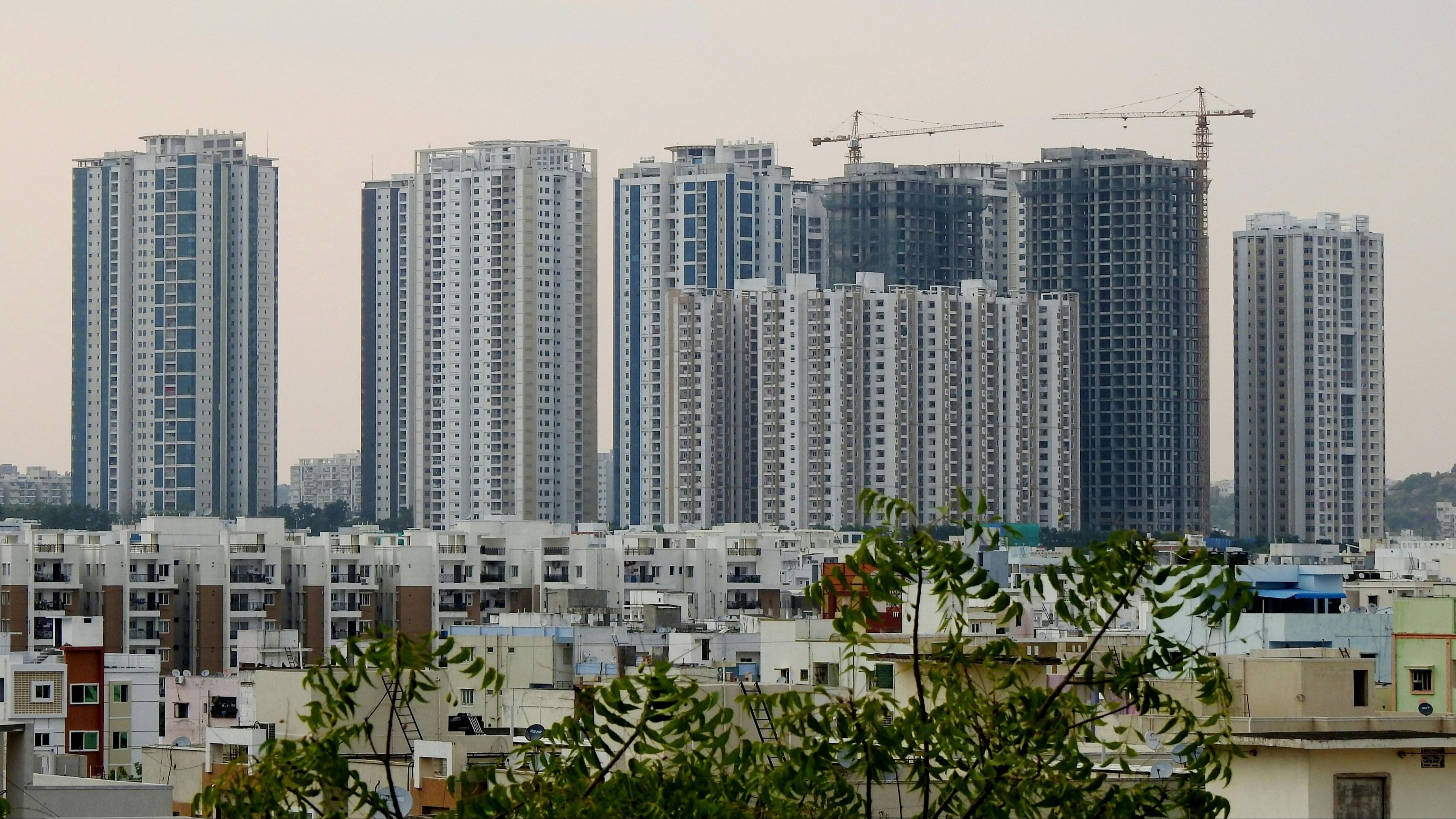
In its latest India Prime City Index report, Knight Frank's India office had analysed the performance of six leading Indian cities - Hyderabad, Bengaluru, Mumbai, Ahmedabad, Delhi, and Chennai - across diverse growth parameters.
Credit: Pexels Photo
Hyderabad: Telangana's capital, Hyderabad, emerged as the 'fastest-growing city' among the six leading cities analysed by London-headquartered independent property consultancy Knight Frank.
In its latest India Prime City Index report, Knight Frank's India office had analysed the performance of six leading Indian cities—Hyderabad, Bengaluru, Mumbai, Ahmedabad, Delhi, and Chennai—across diverse growth parameters.
Among them, Hyderabad stood out as the fastest-growing city due to robust infrastructure development, surging real estate demand, a rising population of ultra-high-net-worth individuals (UHNWIs) and HNWIs, and proactive policy initiatives.
According to India Prime City Index report, released on Tuesday, Bengaluru followed as the second fastest-growing city, due to its exceptional talent pool and dynamic business ecosystem fueling entrepreneurship.
Mumbai-MMR maintained steady growth across all metrics, reaffirming its position as India’s financial capital, and Delhi-NCR ranks highest for its superior physical infrastructure and governance.
For the analysis, Knight Frank India used 49 subfactors, like the city’s economic ability, quality of life, demographic assessment, infrastructure, and real estate developments, from which data was collected for each city through various government and private sources.
“India’s emergence as a global economic powerhouse is underpinned by the exceptional performance of a select group of cities that have transformed into economic and cultural hubs. Each of the six cities have distinct opportunities to accentuate sustainable and inclusive urban development in the country,” said Knight Frank India, Senior Executive Director, Gulam Zia.
Hyderabad strength lies in real estate
According to the Knight Frank India's report, Hyderabad's relative strength lies in its real estate market, where it has the highest score among the six cities.
In 2023, residential annual sales rose by 6 per cent year on year (YoY), driven by homebuyers prioritizing lifestyle upgrades, showing a preference for amenity-rich communities in well-established areas.
The demand for housing was further stimulated by the city’s robust and well-planned network of roads, flyovers, underpasses, and wide ring roads.
The government has also invested strategically in key infrastructure projects, such as Hyderabad Metro Rail, ring roads etc, said the report.
As per Mercer’s quality of living report, Hyderabad ranks top among other major cities in India and also has a large concentration of wealthy population. As per Hurun’s 2024 list, Hyderabad ranks third with the greatest number of wealthy residents and is ahead of Bengaluru.
“The city has also been notable for its efficient administration and proactive approach to implementing infrastructure projects and urban development plans. Transparency in operations, coupled with initiatives aimed at improving ease of doing business has further enhanced Hyderabad’s appeal as a business-friendly destination. Hyderabad’s continued emphasis on fostering a conducive environment for businesses and residents alike underscores its potential to sustain and enhance its standing as a leading global city in the years ahead,” said the Knight Frank India's India Prime City Index report.
Purchasing power high in Hyderabad
The report also said that in Hyderabad, the Local Purchasing Power Index (LPPI) score is 125.9, reflecting significant purchasing power driven by its dynamic job market and tech-driven economy. Residents benefit from competitive incomes and comparatively lower living costs, making Hyderabad a favorable city for disposable income and consumption.
Bengaluru follows closely with an LPPI score of 122.4, showcasing its robust local purchasing power fueled by high salaries in the IT and services sectors. This score highlights the city’s economic dynamism and residents’ capacity to meet local expenses comfortably.
Chennai, with a score of 118.2, demonstrates solid purchasing power, supported by its diverse economy spanning manufacturing, IT, and the automotive industry. The city’s moderate cost of living allows residents to enjoy a stable standard of living.
Delhi-NCR has a score of 108.3, indicating moderate local purchasing power, bolstered by its varied economy in finance, government, and manufacturing. However, higher costs in certain areas can offset some of the economic advantages in this region.
Mumbai-MMR’s LPPI score of 75.3 reflects the city’s high living costs, which limit local purchasing power despite the high incomes in finance, media, and corporate sectors. Residents face relatively elevated prices for housing and services.
Lastly, Ahmedabad has an LPPI of 66.1, indicating the lowest purchasing power among the cities analysed. However, its growing industrial base and comparatively lower costs in non-essential goods help support residents’ purchasing power and point toward future growth potential.
Hyderabad desirable location for real estate investors
Hyderabad also remained a highly desirable location for investors and end users. Residential prices in Hyderabad increased by 11 per cent as of 2023.
Mumbai-MMR and Bengaluru experienced moderate price appreciation of 7 per cent and 9 per cent respectively, supported by sustained demand, with Bengaluru particularly exhibiting strong demand in the premium segment.
In Delhi, residential prices have continued to appreciate, with a 6 per cent increase observed. Chennai and Ahmedabad have the lowest appreciation rates at 4 per cent, with significant increases in neighbourhoods such as Mogappair, Anna Nagar, and Perambur.
Ahmedabad also has the lowest per-square-foot residential prices among the top markets, with most sales occurring in the affordable category below Rs 50 lakhs.